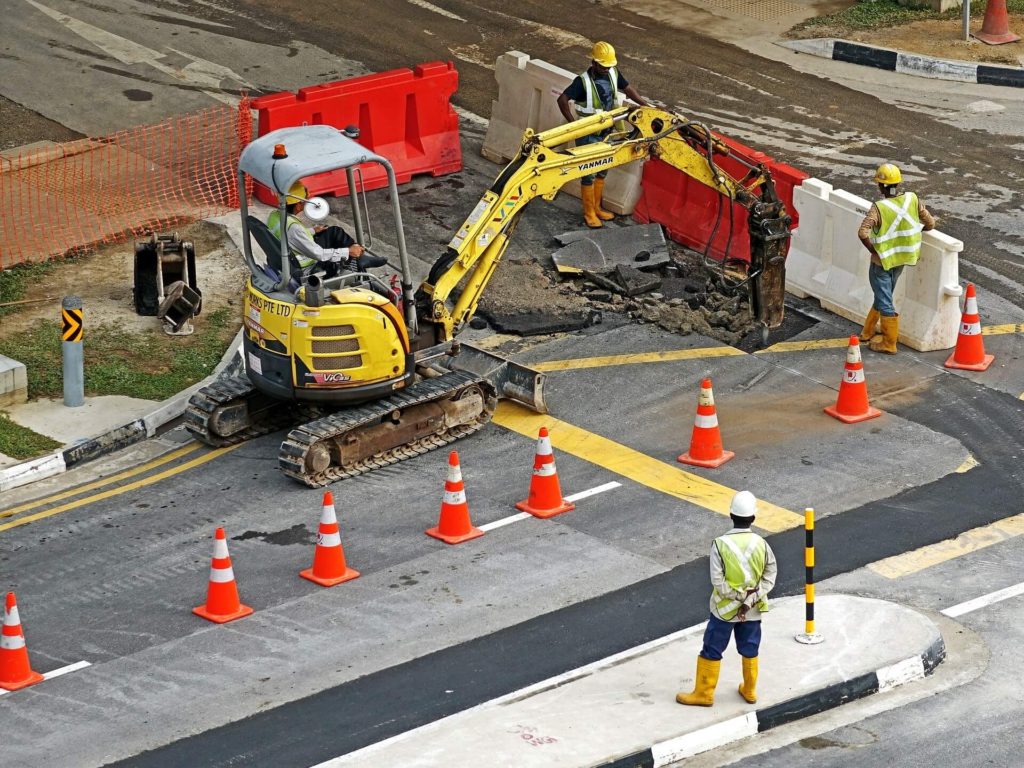 As part of an initiative to increase roadway safety and reduce serious auto accidents in New York construction zones, state officials launched Operation Hardhat in 2019. This program was a collaborative effort between State Police, the New York State Department of Transportation (NYSDOT), and the New York State Thruway Authority. Once again, this program went into effect in 2020 starting last July and resulted in a massive increase in traffic tickets being issued when compared to other parts of the year.
As part of an initiative to increase roadway safety and reduce serious auto accidents in New York construction zones, state officials launched Operation Hardhat in 2019. This program was a collaborative effort between State Police, the New York State Department of Transportation (NYSDOT), and the New York State Thruway Authority. Once again, this program went into effect in 2020 starting last July and resulted in a massive increase in traffic tickets being issued when compared to other parts of the year.
What Is Operation Hardhat?
Operation Hardhat is a program that employs undercover traffic police dressed as regular construction workers. These police officers are assigned to specific construction zones throughout New York where they can more efficiently enforce traffic laws near road crews. New York law requires drivers to reduce their speed, follow road crew instructions, and obey additional driving restrictions in these zones. However, enforcement of these laws has been an issue until Operation Hardhat. With this program, police officers can easily spot reckless drivers and pull them over before they cause a serious accident. While the penalties for violating traffic safety laws do not increase under Operation Hardhat, reports have shown that this program created a significant increase in the number of tickets being issued.
Comparing Traffic Violations Between 2019 and 2020
In 2019, police officers issued over 1,000 traffic tickets under Operation Hardhat, according to a report from the New York Governor’s Office. However, in 2020, these numbers rose by nearly 70%, resulting in 1,779 tickets. In both years, the majority of traffic tickets were issued for:
- Speeding
- Failure to Use a Seatbelt
- Cell Phone Use
- Failure to Move Over
- Failure to Obey Construction Flaggers
- Failure to Obey Traffic Control Device
- Driving While Intoxicated
How Operation Hardhat Impacts Worker Safety
It is too soon to determine how effective Operation Hardhat has been in reducing car accidents between New York drivers and road crews, but there is no doubt that workers are still in danger of being injured by negligent drivers. The significant increase in the number of tickets issued during Operation Hardhat year-over-year suggests two things:
- Traffic violations in construction zones are more enforced now than in previous years, possibly reducing the total number of potential pedestrian accidents in these areas; but
- Despite traffic laws, drivers are still making reckless maneuvers in construction zones, such as speeding, using cell phones, and failing to move over.
Road crews are put in serious danger when drivers disobey traffic laws. The heavily crowded streets and interstates around New York can become even more congested when a construction crew closes down a lane or performs road maintenance on the verge. Drivers should logically lower their speed, pay more attention to workers on the road, and obey all traffic signs; yet, despite increased enforcement, workers are still in danger of suffering serious injuries in catastrophic car accidents.
If you were working on a road crew and were injured by a negligent driver, you are well within your legal rights to pursue full compensation for your injuries. Not only can you seek compensation through your employer’s workers’ compensation program and your own no-fault auto insurance policy, but if your injuries are serious enough, you may be able to file a third-party claim against the driver who struck you. Accidents at construction zones are rarely ever minor, and you should not have to bear the burden of your medical bills on your own.
Instead, reach out to a New York construction accident attorney at Wingate, Russotti, Shapiro, Moses & Halperin, LLP. We have significant experience advocating for construction workers injured on and off the job site. We know how dangerous your profession is and how difficult it is for you to lose work due to an injury. Do not hesitate to call us at (212) 986-7353. We offer free case evaluations and are happy to sit down with you and explain your legal options.